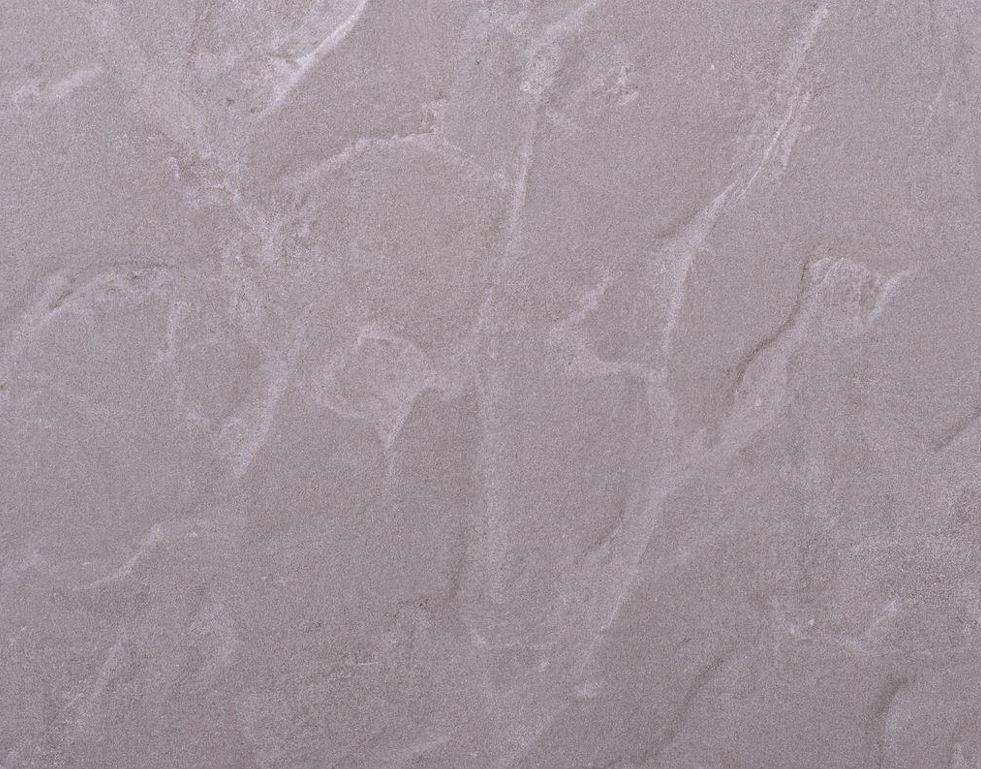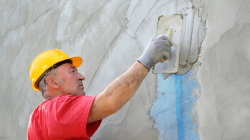Unmatched Durability and Aesthetic Brilliance in Contemporary Constructions
When selecting exterior siding, stucco stands out for its aesthetic versatility and durability. But not all stucco lives up to its potential. Traditional portland cement stucco suffers cracking, moisture damage, and high maintenance costs over time. Fortunately, advanced chemistry and coatings deliver a far superior solution—acrylic-based stucco. Coupled with EIFS insulation, acrylic stucco finish offers the ultimate in performance, longevity, and curb appeal for homes and buildings today.
This article explores the many advantages of acrylic resin finishes for EIFS stucco systems. We’ll compare acrylic stucco with old-fashioned cement stucco. You’ll learn why acrylic EIFS embodies state-of-the-art technology to banish traditional stucco problems for good.
Acrylic Finish Outperforms Traditional Stucco
Polymer-modified stucco surpasses traditional portland cement stucco in nearly every way. Key benefits include:
- Resists Cracking and Crumbling: Acrylics flex with the building, preventing cracks.
- Repels Water: Acrylics resist absorbing moisture and prevent water damage.
- Won’t Discolor or Darken: Acrylics maintain uniform color instead of streaking.
- Wide Range of Textures: From ultra-smooth to coarse, acrylic offers limitless finish options.
- Available in Hundreds of Colors: Cement stucco relies upon site painting with inferior results.
- Low Maintenance: Acrylic stucco keeps its pristine look for decades without sealing or painting.
- Lightweight: Foam-backed acrylic weighs 80% less than cement stucco.
- Superior Insulation: EIFS foam backing boosts thermal resistance and energy savings.
- Cost Effective: Faster installation and decades of near-zero maintenance provide excellent value.
- Enhanced Curb Appeal: With endless finish and color variations, acrylic stucco brings artistry to buildings.
Clearly, acrylic stucco offers compelling advantages that leave traditional portland cement stucco in the dust. Next, we’ll examine the drawbacks of typical cement stucco.
Problems with Conventional Stucco
For centuries, stucco relied on a cement, sand, and lime mortar finish coat. But this cementitious mixture has inherent weaknesses, including:
Cracks and Crumbles Over Time
As the building shifts and settles, brittle cement stucco cannot flex leading to widespread cracking, crumbling corners, and spalling finishes. Repairs are costly and often ineffective.
Absorbs Moisture
Cement stucco is porous, allowing rain and surface moisture to penetrate into the wall assembly. This leads to interior damage, mold growth, freeze damage, and unsightly staining.
Discolors and Darkens
Moisture triggers a chemical reaction in cement stucco causing dark streaking, shadow lines, and uneven discoloration as the stucco ages. Repainting only temporarily masks the issue.
Limited Finish Options
A simple sand float texture is typically the only finish option with cement stucco. Special aggregate finishes require extra steps and expense.
Lack of Integral Color
Obtaining colored stucco requires field painting. However site-applied paint lacks the UV resistance and uniformity of integral color manufacturing.
High Maintenance
Preventing deterioration of cement stucco requires diligent sealing, patching, cleaning, and repainting at significant owner expense.
Not Energy Efficient
Without insulation, cement stucco does nothing to improve the wall system’s thermal performance. This leads to higher heating and cooling costs.
Heavy and Brittle
Weighing up to 25 lb/ft2, cement stucco adds substantial dead load to buildings. The brittle cement also compromises impact resistance.
Prone to Failures
Cement stucco relies on substrates to prevent failure. Improper installation or hidden moisture can lead to catastrophic detachment.
Mediocre Curb Appeal
With color limited to field painting and just a basic texture, cement stucco provides little aesthetic variation or creativity.
Acrylic stucco offers solutions to all these drawbacks using advanced polymers and coatings. Next, we’ll explore the breakthrough technology of acrylic finishes.
Acrylic Stucco Resin Technology
Modern acrylic stucco represents a quantum leap over mixtures of cement, lime, and sand. These innovative finishes fuse the components at a molecular level to achieve unprecedented performance.
100% Acrylic Polymers – Acrylic resins form a flexible, coherent solid surface resistant to cracks and permeation.
Integral Color – Pigments integrate into the molecular structure for guaranteed color consistency and UV resistance.
Elastomeric Properties – Acrylics easily bridge hairline cracks and endure building movements to remain intact.
Breathable – Unlike paints that seal the surface, acrylics allow interior moisture vapor to escape the structure.
Weather and UV Resistant – Advanced acrylics endure decades of sun, rain, snow, and temperature extremes with negligible change.
Low Absorption – With absorption of only 1-2% even after prolonged water immersion, acrylic stucco remains water-resistant.
Lightweight – Weighing 2-3 lb/ft2, acrylic stucco cuts structural loads compared to 22 lb/ft2 for cement stucco.
Insulated – EIFS foam backing boosts thermal resistance to R-values of R-11 to R-25+.
Sustainable – Acrylic stucco contains no Portland cement, avoiding its high carbon footprint.
Thanks to ingenious acrylic polymer technology and coatings science, acrylic stucco offers endless possibilities. Next, let’s examine the deservedly popular EIFS system.
EIFS – The Ideal Acrylic Stucco Assembly
EIFS stands for “exterior insulation and finish system”. This multi-layer assembly combines insulated foam backing with a thin, lightweight acrylic finish layer in a superior stucco package.
Insulation Layer – Rigid expanded polystyrene (EPS) foam boards bonded to the substrate provide insulation ranging from R-5 to R-25 based on thickness.
Base Coat – Fiberglass mesh embeds in the base coat to provide impact resistance and tensile strength.
Reinforcing Mesh – Additional mesh reinforces vulnerable areas and accommodates movement.
Primer – Primers enhance adhesion and moisture resistance while equalizing substrate variances.
Finish Coat – Integrally colored, 100% acrylic premix coats offer unlimited finish options from ultra-smooth to heavily textured.
Flashing and Sealants – Proper details ensure water sheds safely off the facade without penetrating the assembly.
The lightweight insulation and acrylic finish mean EIFS weighs just 2-3 lb/ft2 compared to 25 lb/ft2 for traditional 3-coat stucco. This lightweight cuts structural requirements significantly.
EIFS offers new levels of quality, performance, and artistry simply not possible with dated portland cement stucco technology. Let’s now examine the key factors for successful EIFS applications.
Keys to Long-Lasting EIFS Acrylic Stucco
To gain the benefits of durable, low-maintenance EIFS stucco, consider these essentials:
Proper Design – Account for all movement, weatherproofing details, flashings, terminations and transitions from the onset.
Competent Installer – Hire an experienced contractor specializing in EIFS to ensure correct water management and integration.
Quality Materials – Use weather-tested finish products from reputable EIFS manufacturers only.
Code Compliance – Meet the fire resistance ratings, structural wind loads, and seismic requirements for your area.
Careful Workmanship – Meticulous installation and lapping of mesh and flashings prevent the leading causes of stucco failures.
Ongoing Maintenance – Periodically inspect sealants, clean finishes, and repair any minor cracks to protect your investment.
Avoiding Moisture Issues – Keep sprinklers, rain, and landscape mulch from prolonged contact with the stucco base.
The longevity and performance of your EIFS depend more upon quality materials and workmanship than the inherent properties of acrylic stucco itself. Engaging an experienced contractor is highly advised.
Typical Applications for EIFS
Thanks to its lightweight composition, insulation value, and endless finish options, EIFS acrylic stucco suits almost any project imaginable, including:
- Single-family residential homes
- Multi-family complexes
- Schools, universities
- Hospitals, assisted living facilities
- Office buildings
- Retail stores, shopping malls
- Hospitality projects – hotels, casinos
- Airports, train stations
- Sports stadiums, auditoriums, community centers
- Manufacturing plants, warehouses
- Gas stations, car dealerships
- Restaurants, bars
- Monuments, civic buildings
Both new construction and remodeling projects benefit from EIFS technology. Specialty variations like Class PB systems allow application over existing substrates, avoiding demolition costs.
Installing EIFS Stucco Systems
Installing EIFS requires careful sequencing and acrylic stucco skills:
Surface Preparation – Surfaces must be smooth, clean, and free of defects to permit adhesive bonding of insulation boards.
Backer Board – Fiberglass mat or paper face wraps corners and transitions.
Adhesive – Full contact between insulation and substrate is achieved by notching the EPS foam underside.
Insulation – Boards are cut for tight joints and rasped to create architectural relief designs.
Base Coat – Fiberglass mesh fully embeds in the base coat acrylic adhesive to provide impact resistance and tensile strength.
Reinforcing Mesh – Added mesh reinforces high-stress areas and better accommodates building movement.
Priming – Primers improve adhesion and equalize finish coat absorption across varied substrates.
Finish Coat – Integrally colored acrylic premix is spray applied and hand-troweled to create the final texture.
Sealants – All transitions, openings, and joints integrate with sealants to prevent water infiltration.
With attention to detail, EIFS acrylic stucco provides decades of trouble-free performance and beauty unmatched by traditional stucco.
Maintaining Peak EIFS Performance
Thanks to the self-sealing acrylic finish, EIFS requires far less long-term maintenance than cement stucco. Follow these tips:
- Inspect sealants and reseal as needed every 3-5 years
- Gently wash finishes annually with a low-pressure rinse
- Immediately repair any cracks or damage to prevent water entry
- Avoid directing sprinklers constantly against the base of the wall
- Keep mulch and soil back several inches from the stucco termination
- Consider recoating with a fresh acrylic finish every 8-12 years for rejuvenation
With occasional minor maintenance, your EIFS acrylic stucco will continue providing superb energy efficiency, protection, and aesthetics for your building.
Key Takeaways on Acrylic EIFS Stucco
- Acrylic stucco technology offers huge benefits over outdated cement stucco
- Integrally colored 100% acrylics flex and resist weathering and wear
- Combine with EIFS foam backing for lightweight, energy-efficient walls
- Unlimited finish textures and colors to complement any architecture
- Moisture management and quality installation are key to the best performance
- Low maintenance and repair costs compared to high-maintenance cement stucco
- Ideal for both new builds and remodeling projects
- Provides beautiful, durable exteriors for diverse building types
- Maintains like-new condition for decades with basic upkeep
In summary, advanced acrylic resin finishes coupled with EIFS deliver spectacular stucco performance free of cracking, staining, and constant repairs. Protect and beautify your next project with the proven technology of EIFS acrylic stucco systems. Contact Indiana Wall Systems or call (765) 341-6020 to get answers to any of your questions or to get a free EIFS estimate.



